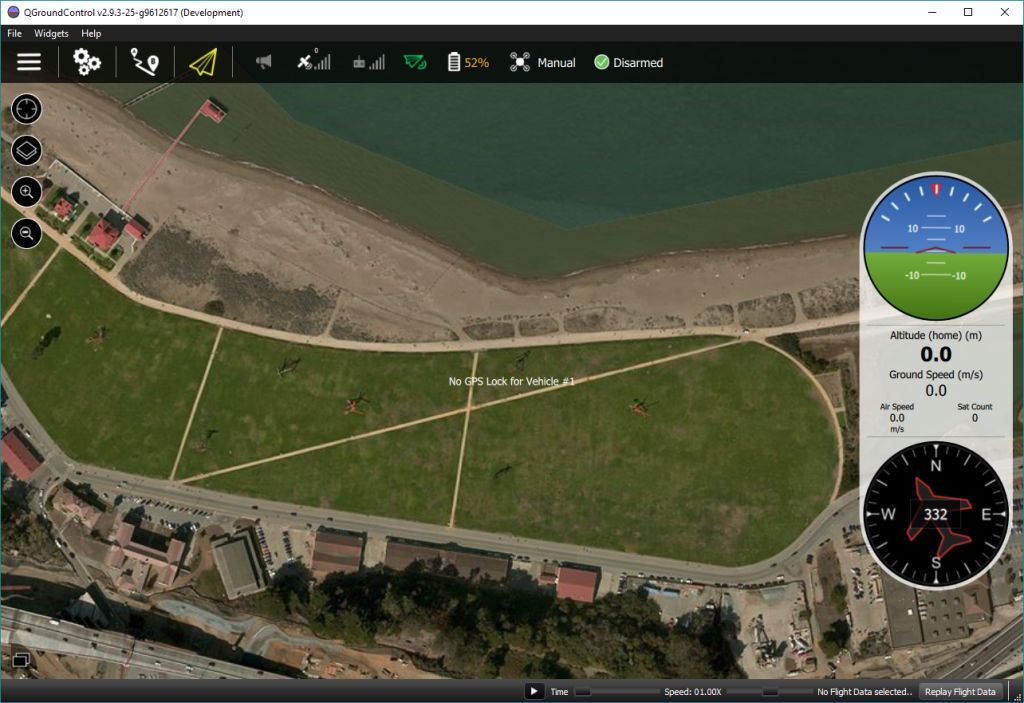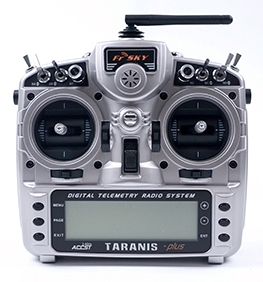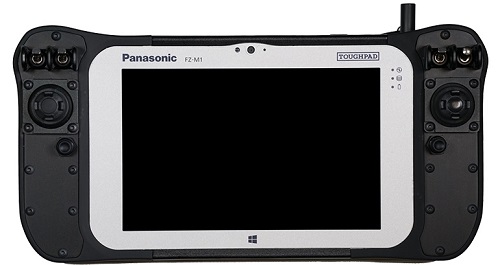基本概念
本主题提供了无人机和使用 PX4 的基本介绍(主要面向新手用户,但对有经验的用户也是一个很好的介绍)。
如果你已经熟悉了基本概念,你可以转到基本组件以了解如何连接特定的自驾仪硬件。 要加载固件并使用 QGroundControl 设置飞行器,请查看基本配置。
无人机是什么?
无人机是无人驾驶的 ”机器人“ 设备,可以远程或自动控制。
Drones are used for many consumer, industrial, government and military applications. 这包括(非详尽):航空摄影/录像,载货,竞速,搜索和测绘等。
存在用于空中、地面、海洋和水下各种不同类型的无人机。 这些(更正式地)被称为无人驾驶飞行器(UAV),无人驾驶飞行器系统(UAS),无人驾驶地面车辆(UGV),无人驾驶水面船只(USV),无人驾驶水下潜航器(UUV)。
无人机的 ”大脑“ 被称为自动驾驶仪。 它由在 设备控制器</ 0>(“飞行控制器”)硬件上运行的 飞行堆栈* 软件组成。</p>
PX4 Autopilot
PX4 is powerful open source autopilot flight stack.
Some of PX4's key features are:
- 可控制许多不同的设备机架/类型,包括:飞机(多旋翼,固定翼和垂直起降),地面车辆和水下潜航器。
- 适用于设备控制器,传感器和其他外围设备的硬件选择。
- 灵活而强大的飞行模式和安全功能。
PX4 is a core part of a broader drone platform that includes the QGroundControl ground station, Pixhawk hardware, and MAVSDK for integration with companion computers, cameras and other hardware using the MAVLink protocol. PX4 is supported by the Dronecode Project.
QGroundControl
Dronecode地面控制站称为 QGroundControl 。 您可以使用 QGroundControl 将(闪存)PX4 加载到飞行器控制硬件上,您可以设置飞行器,更改不同参数,获取实时飞行信息以及创建和执行完全自主的任务。
QGroundControl 可以在 Windows,Android,MacOS 或 Linux 上运行。 从 这里 下载并安装。

Vehicle/Flight Controller Board
PX4最初设计为在 Pixhawk Series 控制器上运行,但现在可以在 Linux 计算机和其他硬件上运行。 选择飞行控制板时,您应当考虑飞行器的物理尺寸限制,想要执行的活动,还有必不可少的成本。
更多信息,请参阅:飞行控制器选择。
Sensors
PX4 使用传感器来确定飞行器状态(稳定和启用自动控制所需)。 系统最低要求 陀螺仪,加速度计,磁力计(罗盘)和气压计。 需要 GPS 或其他定位系统来启用所有自动模式和一些辅助模式。 固定翼和 VTOL 飞行器还应包括空速传感器(强烈推荐)。
有关详细信息,请参阅︰
ESCs & Motors
许多 PX4 无人机使用无刷电机,其由飞行控制器通过电子调速器(ESC)驱动(ESC将来自飞行控制器的信号转换为合适的功率水平,传递给电机)。
有关 PX4 支持的 ESC/Motors 的信息,请参阅:
- 电调 & 电机
- 电调校准
- ESC 固件和协议概述(oscarliang.com)
Battery/Power
PX4 无人机通常由锂聚合物(LiPo)电池供电。 电池通常使用电源模块 或电源管理板 连接到系统,它为飞行控制器和 ESC(用于电动机)提供单独的动力。
有关电池和电池配置的信息,请参见电池配置和基本组件(例如 Pixhawk 4 接线快速入门>电源)。
Radio Control (RC)
无线电控制(RC )系统用于手动 控制飞行器。 它由一个遥控装置组成,使用发射机来与飞行器上的接收机通信。 一些 RC 系统还可以接自动驾驶仪传回的收遥测信息。
PX4 在自主飞行模式中不需要遥控系统。

RC系统选择说明如何选择 RC 系统。 其他相关主题包括:
- 无线电/远程控制设置 - QGroundControl 中的遥控配置。
- 飞行 101 - 学习如何使用遥控器飞行。
- FrSky遥测 - 设置 RC 发射机以从 PX4 接收遥测/状态更新。
GCS Joystick Controller
A computer joystick connected through QGroundControl can also be used to manually control PX4 (QGC converts joystick movements into MAVLink messages that are sent over the telemetry link). This approach is used by ground control units that have an integrated ground control station, like the UAVComponents MicroNav shown below. Joysticks are also commonly used to fly the vehicle in simulation.

Safety Switch
It is common for vehicles to have a safety switch that must be engaged before the vehicle can be armed (when armed, motors are powered and propellers can turn). Commonly the safety switch is integrated into a GPS unit, but it may also be a separate physical component.
A vehicle that is armed is potentially dangerous. The safety switch is an additional mechanism that prevents arming from happening by accident.
Data/Telemetry Radios
Data/Telemetry Radios can provide a wireless MAVLink connection between a ground control station like QGroundControl and a vehicle running PX4. This makes it possible to tune parameters while a vehicle is in flight, inspect telemetry in real-time, change a mission on the fly, etc.
Offboard/Companion Computer
PX4 can be controlled from a separate on-vehicle companion computer via a serial cable or wifi. The companion computer will usually communicate using a MAVLink API like the MAVSDK or MAVROS.
Using a Robotics API requires software development skills, and is outside the scope of this guide.
- 板外控制模式 - 用于从 GCS 或机载计算机对 PX4 进行板外控制的飞行模式。
- Robotics APIs (PX4 Developer Guide)
SD Cards (Removable Memory)
PX4 uses SD memory cards for storing flight logs, and they are also required in order to use UAVCAN peripherals and fly missions.
By default, if no SD card is present PX4 will play the format failed (2-beep) tune twice during boot (and none of the above features will be available).
The maximum supported SD card size on Pixhawk boards is 32GB. The SanDisk Extreme U3 32GB is highly recommended (Developer Guide).
SD cards are never-the-less optional. Flight controllers that do not include an SD Card slot may:
- Disable notification beeps are disabled using the parameter CBRK_BUZZER.
- Stream logs to another component (companion).
- Store missions in RAM/FLASH.
Arming and Disarming
Vehicles may have moving parts, some of which are potentially dangerous when powered (in particular motors and propellers)!
To reduce the chance of accidents:
- PX4 vehicles are disarmed (unpowered) when not in use, and must be explicitly armed before taking off.
- Some vehicles additionally require a safety switch be disengaged before arming can succeed.
- Arming is prevented if the vehicle is not in a "healthy" state.
- A vehicle will also usually revert to the disarmed state after landing or if a pilot does not take off quickly enough.
Arming is triggered by default (Mode 2 transmitters) by holding the RC throttle/yaw stick on the bottom right for one second (to disarm, hold stick on bottom left). It is also possible to configure PX4 to arm using an RC button on the RC control (and arming commands can be sent from a ground station).
A detailed overview of arming and arming configuration can be found here: Prearm, Arm, Disarm Configuration.
Flight Modes
Flight modes provide different types/levels of vehicle automation and autopilot assistance to the user (pilot). Autonomous modes are fully controlled by the autopilot, and require no pilot/remote control input. These are used, for example, to automate common tasks like takeoff, returning to the home position, and landing. Other autonomous modes execute pre-programmed missions, follow a GPS beacon, or accept commands from an offboard computer or ground station.
Manual modes are controlled by the user (via the RC control sticks/joystick) with assistance from the autopilot. Different manual modes enable different flight characteristics - for example, some modes enable acrobatic tricks, while others are impossible to flip and will hold position/course against wind.
Not all flight modes are available on all vehicle types, and some modes can only be used when specific conditions have been met (e.g. many modes require a global position estimate).
An overview of the available flight modes can be found here. Instructions for how to set up your remote control switches to turn on different flight modes is provided in Flight Mode Configuration.
Safety Settings (Failsafe)
PX4 has configurable failsafe systems to protect and recover your vehicle if something goes wrong! These allow you to specify areas and conditions under which you can safely fly, and the action that will be performed if a failsafe is triggered (for example, landing, holding position, or returning to a specified point).
You can only specify the action for the first failsafe event. Once a failsafe occurs the system will enter special handling code, such that subsequent failsafe triggers are managed by separate system level and vehicle specific code.
The main failsafe areas are listed below:
- Low Battery
- Remote Control (RC) Loss
- Position Loss (global position estimate quality is too low).
- Offboard Loss (e.g. lose connection to companion computer)
- Data Link Loss (e.g. lose telemetry connection to GCS).
- Geofence Breach (restrict vehicle to flight within a virtual cylinder).
- Mission Failsafe (prevent a previous mission being run at a new takeoff location).
- Traffic avoidance (triggered by transponder data from e.g. ADSB transponders).
For more information see: Safety (Basic Configuration).
Heading and Directions
All the vehicles, boats and aircraft have a heading direction or an orientation based on their forward motion.

It is important to know the vehicle heading direction in order to align the autopilot with the vehicle vector of movement. Multicopters have a heading even when they are symmetrical from all sides! Usually manufacturers use a colored props or colored arms to indicate the heading.

In our illustrations we will use red coloring for the front propellers of multicopter to show heading.
You can read in depth about heading in Flight Controller Orientation

